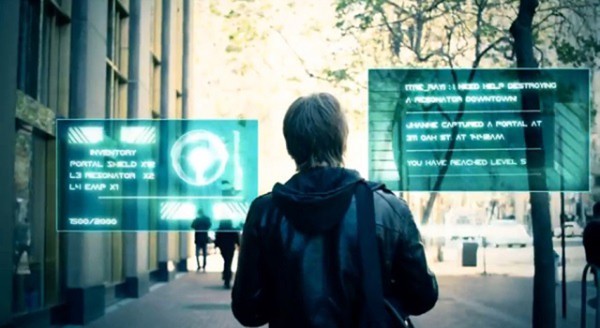Pretty Posts
- How To Boost Innovation With Enterprise Mobility Solutions
- Invest a Little to Make a Big Impact with Virtual Offices
- 3 Tips to Automate Your Marketing Efforts for Your eCommerce Site
- Opt for Facebook Fan Pages as a Key to Social Media Marketing
- Insolvency Practitioners Explain How to Avoid Company Insolvency in 2020
Augmented Reality (AR) is a method for melding the genuine and the virtual world by overlaying advanced information on to the real world analogue views. Or we can say that it is a live guide or backhanded perspective of a physical, certifiable environment whose components are “augmented” by machine generated in, put for example, and sound, graphics, images, videos or GPS. Along with these lines, virtual data is overlaid on the present reality; however Augmented Reality doesn’t replace this present reality with a mimicked one like virtual reality does; but in actual, AR “supplements” the data on the encompassing true by making it intuitive.
AR applications can essentially be divided into two classes: marker-based/picture recognition and area (or GPS)-based applications. From one viewpoint, marker-based applications overlay the marker/picture with some content or data. In order to do so, these applications utilize a camera to perceive a marker or a picture from this present reality, and this way they calculate its position and introduction to augment the truth. Markers perceive a specific example, (for example, a code) when a cam focuses to it, and overlay an advanced picture by then on the screen. For instance, if you check a QR code with your telephone’s camera, you can get extra data (in this way, AR) on your screen. If that picture is 3D or enlivened, you get an advanced experience unfolding at first glance whereupon the example is printed.
Then again, area based applications make use of the GPS instruments as a part of your gadget and utilize its position to discover pertinent information around your area, for example, restaurants nearby, maps, help you get bearings or present you the name of stars and heavenly bodies in the sky.
Major Utilizations of Augmented Reality
- Augmented reality was initially utilized for military, industrial and medicinal purposes, yet in the most recent years it has been extensively connected to business and entertaining areas.
- The field in which we’re most likely more used to see AR is in trade, to coordinate print and video showcasing: everyday increasing, we discover a QR code that we can sweep to get to extra content, for example, video or additional pictures of the product. AR can also improve reviews about the product, for example, permitting clients to view what’s inside the packaging of the product without opening it.
- AR is also connected to games, permitting players to experience computerized digital game play in a real environment; the most known example is the Wii.
- AR is as an increasingly utilized as a part of emergency crisis and in search and rescue cases and it can be exceptionally interesting for instructions as well, because of the fact that content, graphics, videos and sound can be superimposed into an student’s constant surroundings.
The absolute most remarkable fields where AR can be connected are architecture, development and archeology: in the first case, computer generated pictures of a structure can be superimposed into a genuine nearby view before designing a physical building. Also in archeological examination, authorities can increase archeological features onto the cutting edge scene, thus making an extremely precise thought of how the aged developments would look and their circumstance.
In art, AR innovation can help handicapped people to draw, by interpreting their eye developments (through eye following) into drawings on a screen. AR its also exceptionally supportive in modern configuration, in light of the fact that it can help designers experience products’ plans and operations before completion. For example, Volkswagen makes use of AR for contrasting computed and real crash test symbolism.
It can likewise be helpful for navigation devices, by showing important data right on the auto’s windshield, in the same way as headings, climate, street conditions and traffic information.
In pharmaceutical, AR can give “shrouded” data to the specialists: just with AR, specialists can look inside a patient by joining one wellspring of pictures, for example, X-beam with an alternate, for example a video. Expanded Reality can likewise demonstrate the pulse rate, the circulatory strain or the persistent’s organs, and it permits to view an embryo inside a mother’s womb, among others. Additionally, patients wearing Google Glass can be reminded to take medications.
For military purposes, AR offers front line information onto fighters’ goggles continuously, so individuals and products can be stamped.
Displays and gadgets
- AR can be shown on a wide range of showcases, from screens and screens to handheld gadgets or glasses. Case in point, head-mounted displays (HMD) are incredible to place pictures of both the genuine and the virtual world directly before you, over your field of perspective: HMD offer completely immersive and versatile experiences.
- Google Glass and other head-up displays (HUD) like Vuzix Waveguide Lens put Augmented Reality straightforward into your glasses. Soon, AR will likely have the capacity to be connected to contact lenses and virtual retinal shows as well, yet for the minute these applications are still being developed.
- Handheld gadgets utilize a little show that fits in the client’s hand, including cell phones and tablets.
- Where the Spatial Augmented Reality (SAR) needn’t bother with any presentations to increase this present reality: in actuality, it utilizes advanced projectors to show graphical data onto physical items, for example, versatile projectors and shader lights.
Fascinating Augmented Reality applications
- Probably the most fascinating AR applications incorporate Google Goggles, an application for Android that gives clients relevant search results using pictures. This visual inquiry application exploits your telephone or tablet’s camera to find celebrated milestones, output bars and QR codes for data or interpreted texts. You simply need to indicate your camera anything and the application will output to see what it can discover, from historical facts or reference book sections, related items, surveys and a lot more.
- An alternate appealing application is Sky Map: you just need to indicate the night sky with your cell phone or tablet and the application will give you an intuitive guide of the sky, with all the names of stars, heavenly bodies and planets that are at your field of perspective.
- In games, AR Defender 2 for iOS presents an amazingly immersive experience, because it gives you a chance to transform very nearly anything in this present reality into a virtual war zone. You simply need to pick a surface and AR will transform it into a virtual enclosure.
- For originators, applications like Augment can be exceptionally helpful: it permits clients to transfer 3D models of new items and envision them in a physical space and environment before “truly” making them.
How to Develop Augmented Reality applications?
- Most augmented reality applications depend on superimposing either 3D-generated computer symbolism or some type of distinct learning over the continuous pictures got through a camera. This obliges a decent understanding of picture transforming and machine vision strategies: machine produced symbolism needs to look reasonable and be appropriately adjusted to the genuine environment to make a real impression. That is the reason AR designers need propelled machine vision aptitudes, 3D modelling (counting texturing, shading and rendering) and web or versatile programming abilities. Programming dialects can change as per the stage yet are typically C++ and C#.
- To create marker-based applications, the primary instruments and SDKs are ARToolKit, FLARToolkit, SLARToolkit, AR-media Plugin for Google Sketchup, NyARToolkit, LinceoVR, HandyAR, Total Immersion – D’fusion Studio and Unifeye Mobile.
- For GPS-based applications, Layar, Wikitude and Junaio are the primary tools. Layar has a stage that runs on iPhone and Android, and works by utilizing a mixture of the telephone’s cam, compass and GPS information to distinguish the client’s area and field of perspective, recover information focused around those land organizes, and overlay that information over the cam view. Layar is presently accessible for Google Glass, so you can take a gander at items and get more data about them anticipated directly before your eyes.
- Qualcomm has additionally uncovered another programming improvement unit for Android that will make it less demanding for designers to make AR applications for Android gadgets.
- If you are an engineer and need to begin making AR applications, one of the most effortless ways is to produce for a current stage, for example, Layar by going along with its group of developers.
This post might help you with all the doubts you might be having about Augmented Reality. You can learn various applications and how to develop Augmented Reality Applications.
Author Bio: Macy Jones is an artistic and very creative Mobile app Developer. She is working with one of the best App Development Companies in Sydney, Australia. After her work she loves to explore new things and leads an independent life. She is a sea of innovative and useful ideas. She is handling a team of 8 mobile app developers with this organization. Catch her on Facebook and follow her on Twitter to know more about her.




Leave a Reply